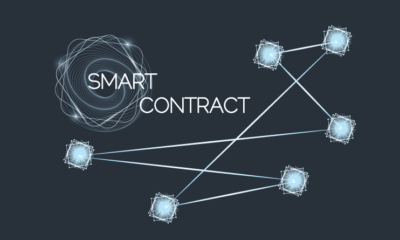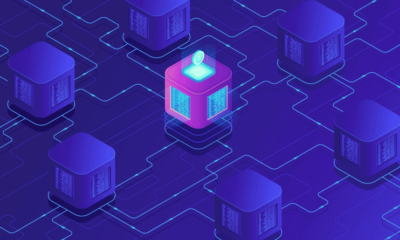
At the beginning of 2018, like at the beginning of every new year, dozens of lists were published predicting the emerging technologies that would breakthrough this year. In their annual list, MIT Technology Review listed 3-D metal printing, artificial embryos, and dueling neural networks (among other things) as technologies that would have a profound effect on our lives. AI foundation, digital twins, and blockchain were just a few of Gartner’s “Top 10 Strategic Technology Trends for 2018”. Some of those predicted emerging technologies did indeed make an impact, while others barely made a ripple at all.
As we approach another new year, we can gear up for another onslaught of lists and predictions. We have no way of knowing for sure what new (and old) technologies will make an impact in 2019. We can, however, keep an eye on several top emerging technologies in the new year as they may end up changing our lives and the world, we live in.
Straight from experts, below are top emerging technologies to follow in 2019:
1. Blockchain initiatives set to pick up the pace
In the past few years, blockchain technology has grown in popularity and prominence. It is expected to provide prime opportunities and solve major problems across a wide range of industries. According to Zac Cheah, CEO of Pundi X, blockchain initiatives are set to pick up the pace in 2019 in four areas.
First, Cheah predicts that more traditional companies will start looking into blockchain technology. Within the sectors of banking, financial services, insurance, supply chain management, healthcare, e-commerce, gaming, and academics, there has already been an increase in the adoption of the blockchain. Major companies are researching ways to implement blockchain and make it a normal part of their processes.
American Express is one example of a large public company that is experimenting with blockchain to give vendors more power over membership rewards. Oracle, Alibaba, Facebook, IBM, and the Walt Disney Company have also announced plans to explore blockchain. Michael del Castillo of Forbes notes that all ten of the largest public companies in the world are exploring blockchain and at least 50 of the biggest companies have all made their own mark on technology first inspired by bitcoin.
Second, blockchain technology is being used in real-world cases beyond financial transactions. Cheah cites National Transport Insurance (NTI), an Australian-based truck and transport insurance company, as one company that has taken advantage of the benefit that blockchain provides. It is using the technology for end-to-end tracking of Australian beef exports.
Additionally, the healthcare sector is increasingly adopting blockchain because it enables the creation of records for patients’ treatments and stores those records online in a very secure manner. In 2019, blockchain technology is set to be instrumental to organizations involved in trade, fraud detection, policy management, insurance, government, and agriculture.
Third, startups are set to disrupt other established businesses within their sector due to the blockchain. This is because established companies are trying to make blockchain technology fit into an already existing business model which often results in problems, while startups are using blockchain as one of the foundations of a new business model. “They are experimenting and building without the constraints of legacy business processes,” Cheah writes. “They focus energy on what is possible and then deal with any challenges as they arise.”
Fourth, in order for new emerging technologies to achieve mainstream adoption, they must be approved or backed by the government in some form. While some world governments remain wary of the blockchain, others have decided to implement it to improve and transform transactions, identification and titles transfer. Countries such as Switzerland, Thailand, and Canada have successfully implemented blockchain technologies to improve governmental processes.
2. Super-connected tech cities are definitely a part of the future
Tech giants such as Alibaba and Google’s parent company Alphabet are diligently working on building smart cities – urban neighborhoods that are designed and built using the latest digital technologies. Alphabet’s Sidewalk Labs revealed its plans to build a new high-tech neighborhood on Toronto’s waterfront. The project is called Quayside and Sidewalk Labs is expected to use tall timber technology in its architecture. According to the Wall Street Journal, the 12-acre development will cost at least $1 billion and will feature heated roadways, self-driving shuttles, a renewable energy system, and other innovations.
Rohit Aggarwala, Head of Urban Systems at Sidewalk Labs, says, “What’s distinctive about what we’re trying to do in Quayside is that the project is not only extraordinarily ambitious but also has a certain amount of humility.”
Even though the project is still in the early stages, several other North American cities reportedly already want their own Quayside. “San Francisco, Denver, Los Angeles, and Boston have all called asking for introductions,” says Will Fleissig, CEO of Waterfront Toronto, the public agency overseeing Quayside’s development.
Alibaba, meanwhile, has launched City Brain in Hangzhou, China. Officially called ‘ET City Brain 2.0’, the cloud-powered and AI-driven urban traffic-management system covers an area of 420 square kilometers and uses thousands of street cameras to collect data to control traffic lights, alert officials about emergencies and provide crucial information to firefighters. The purpose of City Brain is to give meaning to data and the end goal of the system is to boost the city’s efficiency.
Alibaba Cloud President Simon Hu says City Brain is able to analyze a large amount of data and turn it into actionable information in real-time speed by using artificial intelligence and advanced algorithms. Because City Brain is able to predict traffic flow, detect accidents and provide instant feedback, Hangzhou has dropped from 5th to 57th on the list of China’s worst-congested cities.
According to Alibaba Cloud’s official website, the construction principles of City Brain are based on four platforms:
- IT Service Platform – The open IT service platform leads to the prosperity of the industrial ecosystem. It consumes data resources while conserving natural resources.
- AI Service Platform – The open AI service platform uses deep learning technology to mine data resources for valuable information, empowering a city with the ability to think.
- Data Resource Platform – Real-time, the network-wide data aggregation, turns data into a true resource. The platform ensures data security, improves data quality, and uses a data schedule to realize the value of the data.
- Integrated Computing Platform – This platform provides ample computing power to the City Brain. Its extreme elasticity encapsulates the real-time computation of the full city data, exabyte storage capability, and petabyte processing capability, as a result, millions of traffic camera videos can be analyzed in real-time.
Despite security concerns, City Brain has achieved remarkable success. No doubt, other major cities that struggle with traffic congestion such as Shanghai, New York City, Los Angeles, and Tokyo, will also be looking to adopt technology like City Brain in the coming year.
3. Fashion that adapts to your movement and mood
In August 2018, Reebok introduced ‘PureMove’, a sports bra made with Motion Sense technology treated fabric designed to change the number of support women receives based on the intensity of their workouts. Treated with shear-thickening fluid (STF), PureMove’s fabric stiffens to provide more support while the wearer is moving and softens while the wearer is resting. In developing PureMove, Reebok partnered with researchers from the University of Delaware and conducted breast biomechanic testing using 54 unique motion sensors, compared to industry standards for sports bra testing which uses just four motion sensors.
In a review on Business Insider, Lulu Chang described the sports bra as a Tempur-Pedic for a woman’s chest. “STF remains in liquid form when the fabric (and in this case, you) are sedentary or slow-moving, and begins to turn solid as it senses movement at higher velocities,” Chang writes. “That means that your bra literally moves with you, tightening and offering more coverage and support as your workout intensifies.”
Confirming that the Motion Sense technology actually works, Amanda Furrer at Runner’s World called PureMove “a sports bra game-changer”.
Sports company Puma and the MIT Design Lab, powered by Biorealize, also partnered together to develop shoes that use bacteria to tell how athletes feel and improve their performance. Labeled the ‘Breathing Shoe’, it debuted at the Milan Design Week 2018 in April. The Breathing Shoe is composed of biologically active material that houses microorganisms. The material learns the specific heat patterns of a wearer and opens up ventilation based on those specific heat patterns.
From an official press release, Puma and the MIT Design Lab also developed a Deep Learning Insole and a Carbon Eaters t-shirt:
The biologically active Breathing Shoe pushes the boundaries of bio-fabrication and enables personalized ventilation by growing its own air passageways that keep the foot cool.
The next-generation Deep Learning Insoles improve the athlete’s performance through real-time biofeedback. The sole uses organisms to measure long and short-term chemical phenomena that indicate fatigue and well-being.
The microbially-active Carbon Eaters t-shirt responds to environmental factors by changing its appearance and informing the user about air quality.
We can expect to see more technological advancements in fashion in 2019 … and perhaps not only in athletic-wear.
4. More drone operations centers will be established
As more and more organizations see the benefits of drone technology, the establishment of drone operations centers can be expected to increase. Much like airports monitor the takeoffs, landings and maintenance of airplanes, these drone operations centers will manage the comings, goings, maintenance, deliveries and cameras of unmanned aerial vehicles for designated areas. They will be manned by drone pilots who have received their certification from the Federal Aviation Administration (FAA).
A good model of what upcoming drone operations centers will most likely look like is the Drone Operations Center run by Singapore-based Garuda Robotics Pte. Ltd. According to their website, the cloud-based and mission-critical center is “designed to support safe and effective unmanned aircraft flight operations for multiple applications in an urban environment, both within and beyond Visual-Line-of-Sight (VLOS/BVLOS).” Powered by Garuda Plex, the center has multiple features, including:
- Drone Fleet Management which allows for the monitoring of autonomous BVLOS drone operations nationwide.
- BVLOS Command and Control which allows for the commanding of unmanned aircraft for their assigned tasks remotely.
- Live Video Streaming and Telemetry which delivers real-time data for maximum efficiency and situational awareness.
For now, the use of drones remains heavily regulated and limited in the U.S. and around the world, but there is no doubt that they hold tremendous opportunity in the future of unmanned aviation. When designed and managed properly, drones can benefit:
- Search and rescue efforts
- Building and structural inspections
- Traffic monitoring
- Transportation of goods
- Delivery of medical supplies to hard-to-reach areas (particularly during natural disasters such as earthquakes, tsunamis, etc.)
- Surveillance and monitoring of large events
- Security and patrol
- Large-area survey and mapping
- Agriculture management
During a TEDx event, Garuda Robotics CTO Ong Jiin Joo explained how drones are playing an increasingly important role in agriculture. Drones are suited for large scale data capture, analysis applications and combing large swathes of land to profile crops and detect anomalies. As a result, palm oil plantation managers and workers in South East Asia are able to benefit from having this eye in the sky as they have hundreds of thousands of acres of trees under their care. Agricultural plantations with drones are also important for reasons of sustainable agriculture, foreign labor, pollution management, and food traceability. You can listen hear Joo’s TEDx talk titled, “Drones in the Sky: Future of Plantation Management”, on YouTube here.
According to a Blue Research report which was published this year, one in 10 companies with revenue of $50 million and more use drones and 92% of those companies said they saw a positive return on their drone investment within one year. The “State of Drones in Big Business” report was commissioned by commercial drone services and software provider Skyward, a Verizon company. Furthermore, the report suggests that drone use is on the rise across all U.S. industries. Top companies all over the world, both within the tech and outside of tech, are investing in drone technology. Here are a few:
- Police Scotland are using drones to search for missing people, track criminals, and survey traffic incidents.
- UK-based Brecon Mountain Rescue Team is using drones to reduce search hours and improve its response to incidents.
- Rwanda-based blood delivery supplies service, Zipline, is using drone technology to cargo blood supplies.
- UPS is using drones to make commercial deliveries to remote locations.
- The UK-based online takeaway company, Just Eat, has tested food delivery via drone in select U.S. and European cities. According to the company’s Chief Product and Technology Officer Fernando Fanton, “This is another example of how we are pushing technology boundaries to provide our customers and restaurant partners with more choice and flexibility.”
- BBC is using drones to capture photos and video for news. The broadcasting company has even formed its own in-house “drone journalism” team.
- Shell has implemented drones at several large energy plants to help workers with the inspection.
- Walmart has an early-stage project in which drones are used to deliver groceries ordered online that same day to the customer.
- Amazon is testing the delivery of packages with drones. Through its Prime Air service, Amazon hopes to deliver packages that weigh less than five pounds within half an hour after a customer orders online.
5. The quantum computing race heats up
Gartner describes quantum computing as: “[T]he use of atomic quantum states to effect computation. Data is held in qubits (quantum bits), which have the ability to hold all possible states simultaneously. Data held in qubits is affected by data held in other qubits, even when physically separated. This effect is known as entanglement.” Simply put, instead of using the traditional binary code for digital communications, quantum computers use quantum bits or qubits.
In his Forbes article, “Four Emerging Technology Areas That Will Help Define Our World In 2019”, Chuck Brooks predicts that quantum computing will impact artificial intelligence and data analytics, thus accelerating the human race into the future. “The quantum computing power and speed will help us solve some of the biggest and most complex challenges we face as humans,” Brooks writes.
The fact that the U.S. recently passed a bill to provide $1.2 billion in funding to quantum research is proof that it is a technology that needs to be watched in the coming years. According to a Gizmodo report, the U.S. bill creates quantum infrastructure, including a National Quantum Coordination Office, a Subcommittee on Quantum Information Science, and a National Quantum Initiative Advisory Committee. It includes directives and $80,000,000 per year in funding from 2019 to 2023 for the National Institute of Standards and Technology. It directs the National Science Foundation to create “at least two, but not more than five, Multidisciplinary Centers for Quantum Research and Education,” each of which would receive $10,000,000 per year from 2019 to 2023. It also directs the Department of Energy to create “at least two, but not more than five, National Quantum Information Science Research Centers,” each of which would receive $25,000,000 per year during the same period.
A new report suggests that it is highly unlikely we will have a quantum computer that is able to break the strongest codes protecting online communications and computer data anytime soon. But for those who keep up with quantum computing, U.S. funding for it has come right on time. Pitched by some as the next space race between countries (especially China and the U.S.), there was a concern that the U.S. was falling behind in the quest to build a practical quantum computer. The National Quantum Initiative Act was supported by both Democrats and Republicans in deeply polarized Washington.
Rep. Lamar Smith, a Republican from Texas and co-sponsor of the bill, said in a statement: “The National Quantum Initiative Act leverages the resources and expertise of U.S. government, industry, and academia to create a unified national quantum strategy that ensures the U.S. continues breakthroughs in Quantum Information Science.”
The bill also received applause from Amazon, Intel, IBM, Quantum Xchange and others in the tech industry. “Quantum science offers amazing opportunities and will have profound impacts on society, the economy, and national security,” Bill Vass and Simone Severini of Amazon Web Services said in a statement, “Because of this, we are excited about and fully support the National Quantum Initiative Act.”
6. Internet of Things (IoT) reach will widen
According to a general definition, the Internet of Things refers to “a system of interrelation computing devices, mechanical and digital machines that are provided with unique identifiers and the ability to transfer data over a network without requiring human-to-human or human-to-computer interaction.” While it is still a fairly new technology, there are already over 30 billion things connected through IoT. Its massive growth rate will only continue as we progress further into the 21st century.
According to a report in Computer World UK, there are several trends that will shape IoT in the coming year, including the following three:
First, more companies are expected to adopt IoT solutions, particularly companies involved in manufacturing, healthcare, retail, and utilities. In a blog post, research firm Forrester wrote: “B2B IoT will take a play from the mobile rollouts in 2000 that went beyond the buzz of what was possible, focusing on field assets, distributed management, and remote control. In that same way, B2B IoT will focus on driving efficiencies, connecting the enterprise, expanding the edge and in some cases, providing personalized customer experiences.”
Second, Industrial IoT (IIoT) is expected to grow by leaps and bounds in 2019 to reach over $123 billion by 2021. Canonical VP of Engineering, IoT and Devices, Jamie Bennett, says, “The potential of IoT within industrial sectors will be high, but this new world still isn’t properly understood. The big institutions have not seen the benefits as they already believe they have solutions which are sound.”
Third, edge computing will continue to be impactful for IoT devices. HPE defines edge computing as “the practice of processing data near the edge of your network, where the data is being generated, instead of in a centralized data-processing warehouse.” It is extremely beneficial to IoT because it: (1) helps reduce latency for critical applications, (2) lowers dependence on the cloud, and (3) better manages the massive deluge of data being generated by the IoT.
Markus Noga, head of machine learning at SAP, told Computer World UK: “We’re going towards edge computing, which is gaining momentum continuously as we realize that volumes are just too large to be pushed to the cloud.”
What do you think of these emerging technologies? Will they make an impact in 2019 or is it too early to tell? Either way, the real question is: Are we ready to embrace it?








